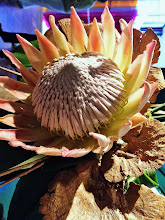I sure would like to kick its whatzis.... just to get even.
But I am afraid that would break all toes and more.
On top of the weariness and aches the tank encounter left behind.
That I made it and got up was truly a miracle. And no Champagne Breakfast waiting!
Ah, the joys of age!
Lovely ain't they?
Too tired, even, to read! That says a lot for me!
A couple days ago I finished reading about LaVeuve!
She sure did rather well 200 years ago.
As I read in the book about her by Tilar Mazzeo "The Widow Clicquot"
in which she manages to write with liquid grace (no doubt helped by a glass or two :-),
and plausibly conjectured about this widow who left behind not much in dairies or letters,
and still was quite unique for her time.
in which she manages to write with liquid grace (no doubt helped by a glass or two :-),
and plausibly conjectured about this widow who left behind not much in dairies or letters,
and still was quite unique for her time.
Napoleon Bonaparte did like HIS champagne but preferred the Moet line!
There were a few other women in the Champagne business...
Lilly Bollinger, Louise Pommery but none as dedicated as La Veuve!
And her name still means delight in the bubbles for gourmet, and even the gourmand, champagne sippers!
One can never have enough Champagne...by whatever name:
Clicquot, Pommery. Bollinger, Piper Heidsiek, Moet et Chandon, Mumm, Roederer,
Henkel, Schlumberger or any methode champagnois labelled
nectar of the gods also often known and beloved as liquid gold.
But the French swiftly caught up with that trend and still are first in the champagne line.
Any other product with bubbles NOT grown in the Champagne Region of France just has to make do with being called "Sparkling Wine", "Sekt" or "Wine by methode champagnois"!
And that the Russian Court preferred a sweeter version of it.
And still serve it as their KRIMSEKT for example.
These are red Sekts - from Russia with Love -
but there are white and rose varieties as well.
So VIVE LE VEUVE!
I'll drink to that!
And Good Bye Tank!
I do forgive you! You can Thank La Veuve!
Or better yet with La Grande Dame!

3 comments:
You continue to generate "out-of-box" POSTS which I find to be very thought-provoking.
Your Champagne POST revisits how the "sparkling bubbly" was born to become a global icon. Regarding the Widow (Verve) Cliquot's "pioneering" efforts, during the late-18th and early 19th century period, to develop the "remuage" process which allowed champagne to be enjoyed by everyone (not just the rich), I have a question on the true origin of the proces.
In point, what impact did Don Pierre Perignon, the 17th century monk from Hautvillers (Northeast France) have on the process which Cliquot developed? Most would agree that Verve Cliquot and Dom Perignon, today, are quite different.
Go Aeros!
Dom Perignon may not have given birth - so to speak - to champagne, but he sure was instrumental in developing the art of 'blending skillfully' as many (in today's world of chmapagnes) as 40 different'crus'=growths of the 3 allowed grapes types grown in different parts of the Champagne region!
According to current French law, only 3 types of grapes may be used to make champagne: black pinot meunioer and pinot noir grapes and the white chradonnay grapes!
I hope that answers your question, ICEVET.
oops sorry... an o crept into meunier and a few other types.. champagne (not chmapagnes-nothing to do with schma lol) and grapes types should be grape types.
Post a Comment